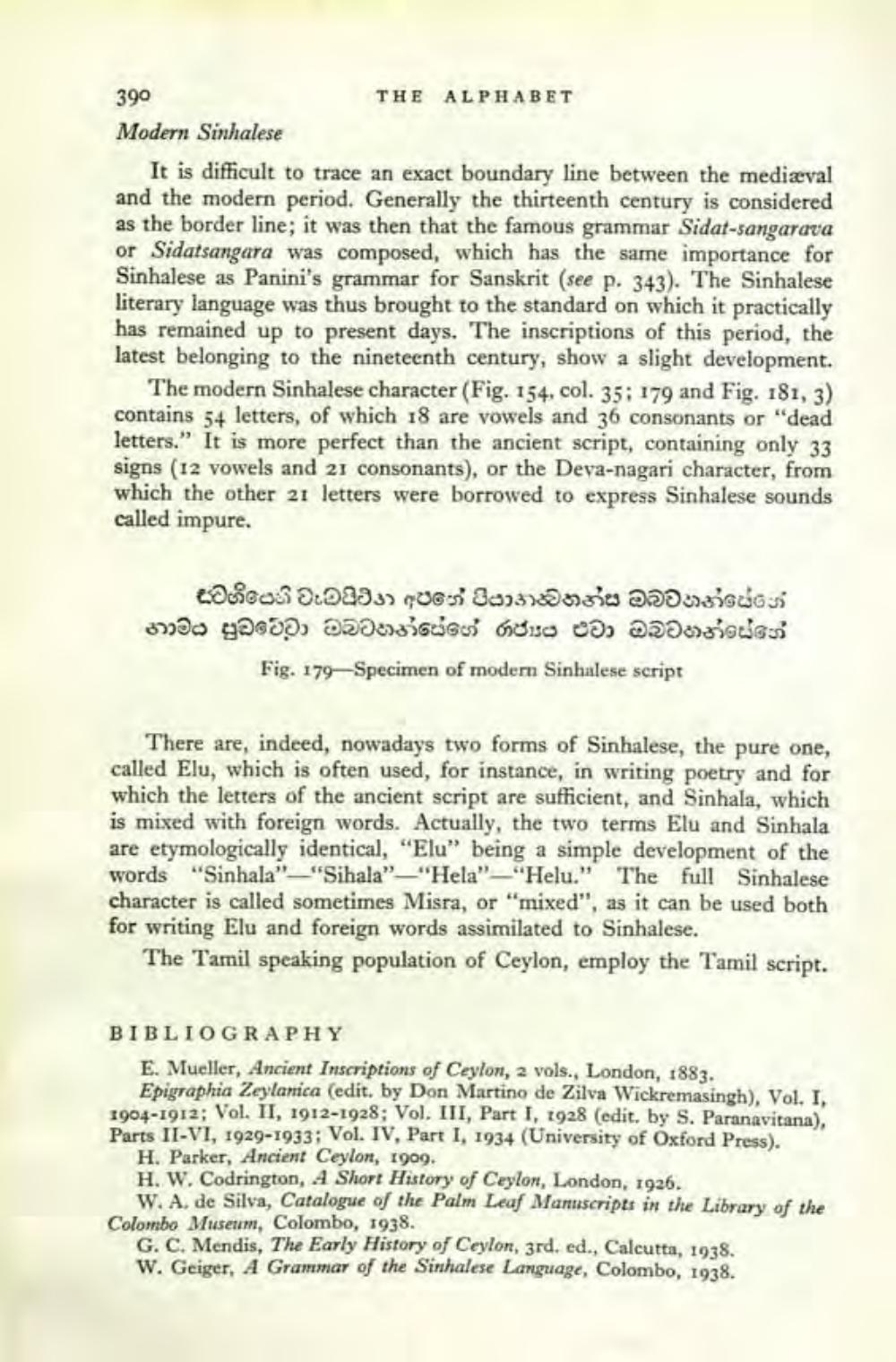________________
390
Modern Sinhalese
It is difficult to trace an exact boundary line between the mediaval and the modern period. Generally the thirteenth century is considered as the border line; it was then that the famous grammar Sidat-sangarava or Sidatsangara was composed, which has the same importance for Sinhalese as Panini's grammar for Sanskrit (see p. 343). The Sinhalese literary language was thus brought to the standard on which it practically has remained up to present days. The inscriptions of this period, the latest belonging to the nineteenth century, show a slight development.
THE ALPHABET
The modern Sinhalese character (Fig. 154, col. 35; 179 and Fig. 181, 3) contains 54 letters, of which 18 are vowels and 36 consonants or "dead letters." It is more perfect than the ancient script, containing only 33 signs (12 vowels and 21 consonants), or the Deva-nagari character, from which the other 21 letters were borrowed to express Sinhalese sounds called impure.
ස්වර්ගයෙහි වැඩයිටින අපතේ පියානන්වහන්ස ඔබ වහන්සේගේ නාමය සුද්ධවේවා ඔබට හන්සේගේ රාජ්යප එවා ඔබටහන්සේගේ
Fig. 179 Specimen of modern Sinhalese script
There are, indeed, nowadays two forms of Sinhalese, the pure one, called Elu, which is often used, for instance, in writing poetry and for which the letters of the ancient script are sufficient, and Sinhala, which is mixed with foreign words. Actually, the two terms Elu and Sinhala are etymologically identical, "Elu" being a simple development of the words "Sinhala"-"Sihala"-"Hela"-"Helu." The full Sinhalese character is called sometimes Misra, or "mixed", as it can be used both for writing Elu and foreign words assimilated to Sinhalese.
The Tamil speaking population of Ceylon, employ the Tamil script.
BIBLIOGRAPHY
E. Mueller, Ancient Inscriptions of Ceylon, 2 vols., London, 1883.
Epigraphia Zeylanica (edit. by Don Martino de Zilva Wickremasingh), Vol. I, 1904-1912; Vol. II, 1912-1928; Vol. III, Part I, 1928 (edit. by S. Paranavitana), Parts II-VI, 1929-1933; Vol. IV, Part I, 1934 (University of Oxford Press).
H. Parker, Ancient Ceylon, 1909.
H. W. Codrington, A Short History of Ceylon, London, 1926.
W. A. de Silva, Catalogue of the Palm Leaf Manuscripts in the Library of the Colombo Museum, Colombo, 1938.
G. C. Mendis, The Early History of Ceylon, 3rd. ed., Calcutta, 1938. W. Geiger, A Grammar of the Sinhalese Language, Colombo, 1938.




